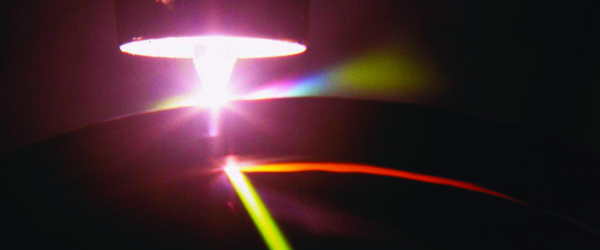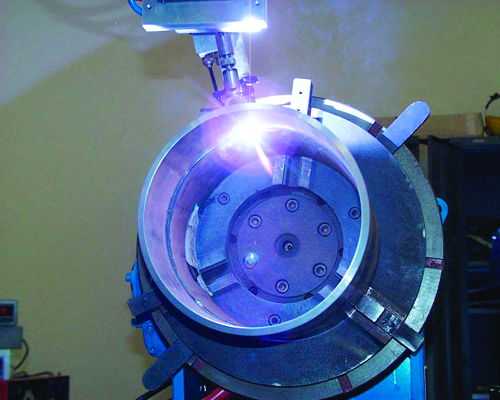Savings for Stainless
Posted 30 November 2003

Researchers from the Commonwealth Scientific and Industrial Research Organisation (CSIRO) and the Cooperative Research Centre for Welded Structures (CRC-WS) have developed a welding process for stainless steels and other corrosion-resistant metals that is significantly faster, cheaper and easier than current practices.
The patented process is an elaboration of standard gas-tungsten arc welding (GTAW), and uses a specially designed torch that establishes and maintains a ‘keyhole’ at the joint.
The weld then proceeds, zipper-like, with the melted sides of the keyhole fusing at the back as the torch melts new material in front of it.
Keyhole GTAW is most effective for materials of low thermal conductivity, such as titanium and stainless steel, but does not work with good thermal conductors such as aluminium.
‘In comparison to conventional GTAW, machining of the edges to be joined is greatly reduced, it uses about one-twentieth the filler material, and reduces the welding time by about tenfold’ says Dr Ted Summerville, a commercial manager at CSIRO Manufacturing & Infrastructure Technology in Adelaide.
 Applications of the technology include tube making, welding of rotatable products such as pipes and the joining of large sheets. The technology is particularly advantageous for welding thicker materials.
Applications of the technology include tube making, welding of rotatable products such as pipes and the joining of large sheets. The technology is particularly advantageous for welding thicker materials.
In keyhole welding, the arc melts the metal right through on both sides of the joint. Via surface tension, this establishes a stable structure which joins the front and rear surfaces through the width of the material. The weld pool is thus anchored, preventing the ejection of molten material.
The result is a process which is not only relatively inexpensive to acquire, but is also cheap to operate. The torch melts right through the joint where the two metal pieces to be welded abut, and molten metal extends through the depth of the material – up to 12mm thick for steels and 16mm for titanium alloys.
Very little filler material is needed to make the joint – about 50g/m for welding 12mm thick stainless steel, compared with about 1kg/m using conventional GTAW. And the joint is made in one pass, compared with up to seven for the thickest steels and titanium alloys.
Reduction to a single pass means that the metal at the site of the weld is only at risk of contamination once, whereas if it is welded seven times, there are seven opportunities for contamination.
The lack of multiple passes also vastly increases welding productivity. Typical examples of keyhole performance include single-pass welding of 12mm thick austenitic stainless steel at speeds of 300mm/min, 8mm carbon–manganese steel at 500mm/min, and 3mm ferritic stainless steel at 1000mm/min.
In one comparison, the welding time of 35min/m for 12mm stainless steel plate using conventional GTAW was reduced to <3.5min/m using the keyhole method.
And the quality of the welds is generally excellent. ‘We have qualified the process against a range of American standards’, says Dr Summerville, ‘and it has always passed’.
In addition, it is clean welding process. Fume generation using conventional GTAW is very low, and the same is true for keyhole GTAW.
The drawback to keyhole GTAW is that the torch can only be used in the conventional downhand position – the joint must be made between horizontal sheets with the torch vertical.
Recent work, however, has demonstrated that it is possible to operate the technology ‘out-of-position’, and this could lead to many new applications in the future.
‘If keyhole welding could be done in any position – for instance, if you could rotate the torch around pipe – it would increase the market for the technology by about ten times’, says Dr Summerville.
The technology is currently being licensed by the joint owners of the technology – CSIRO and the CRC-WS – and licencees are already successfully applying the technology in USA and Finland.
A number of licensees in these markets have reported significant productivity improvements.
Licenses for the keyhole welding technology are being offered in Australia, Europe and USA for use in the manufacture of products ranging from spiral-welded pipe to railway rolling stock.
This article featured in Australian Stainless magazine - Issue 26, November 2003.